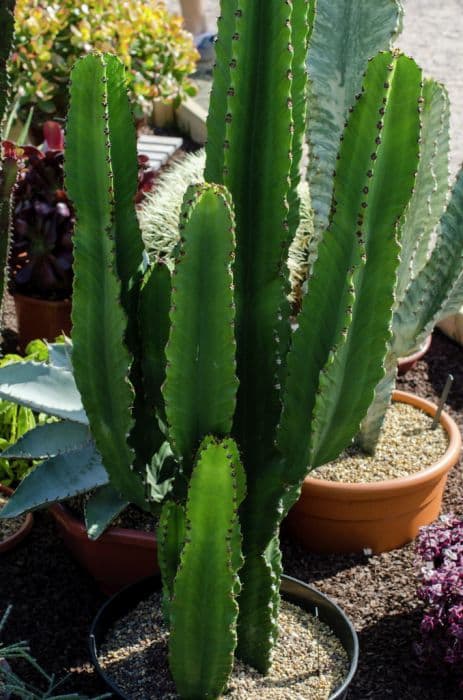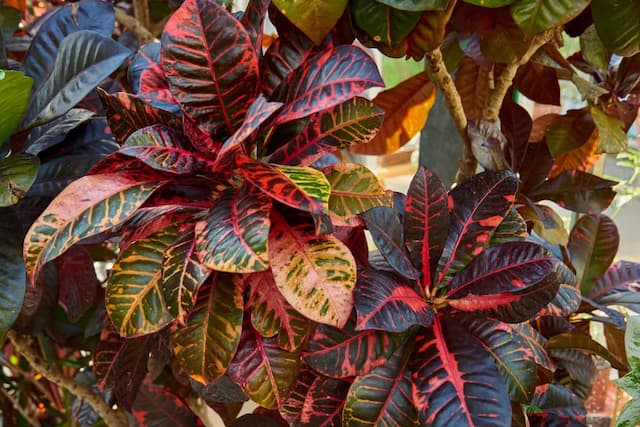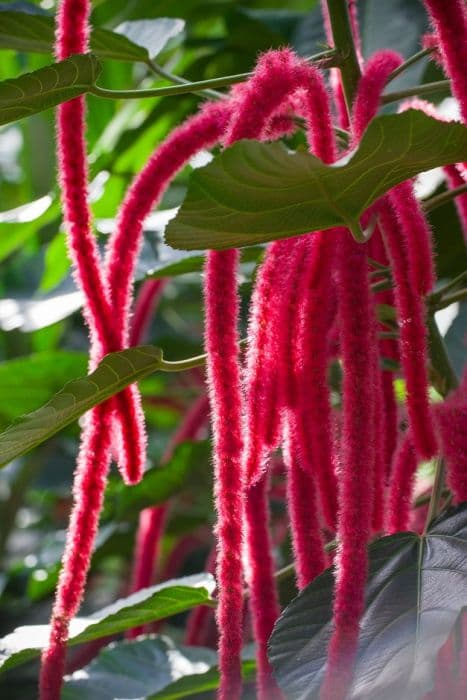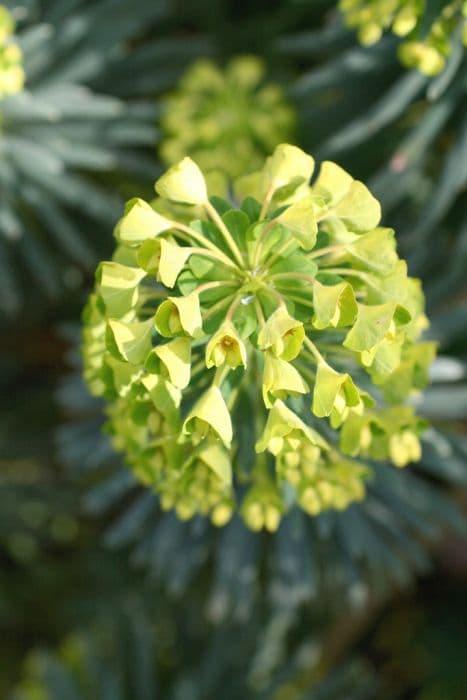Hispaniola cat's tail Acalypha hispaniolae

ABOUT
A. hispaniolae is a compact, somewhat trailing shrub with neat, ovate dark green leaves, and crimson flower spikes 5 - 7cm in length, from spring to autumn
About this plant
 Names
NamesFamily
Euphorbiaceae
Synonyms
Hispaniola Copperleaf
Common names
Acalypha hispaniolae
 Characteristics
CharacteristicsLife cycle
Perennials
Foliage type
Evergreen
Color of leaves
Green
Height
2-3 feet (60-91 cm)
Spread
2-3 feet (60-91 cm)
Plant type
Shrub
Hardiness zones
10
Native area
Caribbean
Benefits
 General Benefits
General Benefits- Erosion control: Acalypha hispaniolae, commonly known as Hispaniola Copperleaf, has a root system that can help stabilize soil and prevent erosion.
- Habitat for wildlife: The plant offers habitat and nourishment for various species of insects, birds, and other wildlife.
- Ornamental use: With its decorative foliage, the Hispaniola Copperleaf is often used for aesthetic purposes in gardens and landscaping projects.
- Drought resistance: Adapted to dry conditions, it can thrive with minimal watering, making it suitable for xeriscaping or drought-prone areas.
- Growth in poor soils: The plant is tolerant of a wide range of soil types, including poor soils, reducing the need for soil amendments.
 Medical Properties
Medical Properties- This plant is not used for medical purposes.
 Air-purifying Qualities
Air-purifying QualitiesThis plant is not specifically known for air purifying qualities.
 Other Uses
Other Uses- Insect repellent: Acalypha hispaniolae may be used as a natural insect repellent, with its leaves possibly containing compounds that insects find unattractive or irritating.
- Dye production: The pigments extracted from the plant can be used to create natural dyes for textiles.
- Fish poison: Certain indigenous communities may use the plant's toxic properties to stun fish, making them easier to catch.
- Religious significance: Some cultures may include the plant's unique foliage in their spiritual rituals or adornments for ceremonial purposes.
- Soil erosion control: The dense growth habit of Acalypha hispaniolae could help in preventing soil erosion in vulnerable areas.
- Companion planting: The plant might be used in gardens to deter pests from more sensitive crops due to its potential repellent properties.
- Bioindicator: Researchers could potentially use Acalypha hispaniolae to monitor environmental health, as some plants can indicate the presence of heavy metals or other contaminants in the soil.
- Ornamental crafts: The leaves and stems of Acalypha hispaniolae could be utilized in the creation of decorative items such as wreaths or arrangements.
- Education and research: The plant can be a subject for botany students or researchers studying the biodiversity of the region or its specific ecological niche.
- Eco-friendly packaging: Research might explore the usage of fibrous parts of the plant for developing sustainable packaging materials.
Interesting Facts
 Feng Shui
Feng ShuiThe plant name Acalypha hispaniolae is not used in Feng Shui practice.
 Zodiac Sign Compitability
Zodiac Sign CompitabilityThe plant name Acalypha hispaniolae is not used in astrology practice.
 Plant Symbolism
Plant Symbolism- Adaptability: Acalypha hispaniolae, commonly known as Chenille Plant, grows in various environmental conditions, symbolizing the ability to thrive in diverse situations.
- Vibrancy: The bright, attention-grabbing catkins of the Chenille Plant represent vibrance and an energetic spirit.
- Uniqueness: With its unique appearance, the Chenille Plant symbolizes standing out from the crowd and celebrating individuality.
- Growth: Chenille Plants are fast growers, symbolizing rapid development and the potential for personal expansion and progress.
- Femininity: The soft, tail-like flowers of the Chenille Plant are reminiscent of femininity, often representing softness, grace, and beauty.
 Water
WaterFor Chenille plants (Acalypha hispaniolae), ensure the soil remains moist but not soggy. Water thoroughly when the top inch of the soil feels dry to the touch, which may be about once a week, depending on environmental conditions. During active growth in spring and summer, they might need more frequent watering, while in fall and winter, watering should be reduced. For a medium-sized pot, you may use approximately 16-24 ounces of water per watering session. Always empty the saucer under the pot to avoid waterlogging and root rot.
 Light
LightChenille plants prefer bright, indirect sunlight, so placing them in a bright room where they can receive filtered light is ideal. They can tolerate some direct morning sun but should be protected from harsh afternoon rays. A north-facing or east-facing window is a good spot for these plants, ensuring they receive adequate light without being exposed to intense direct sunlight.
 Temperature
TemperatureChenille plants thrive in warm conditions and prefer to be kept at temperatures between 60-85 degrees Fahrenheit. To avoid cold damage, keep the plant away from drafts and ensure the temperature does not drop below 55 degrees Fahrenheit. The ideal range is comfortable room temperature for most homes, avoiding any sudden changes in temperature.
 Pruning
PruningPruning Chenille plants encourage bushier growth and should be done in the spring before new growth begins. Trim back leggy stems and any dead or yellowing leaves to maintain the plant's attractive shape. This can be done 2-3 times a year or whenever the plant appears to be getting too unruly. The best time to prune is early spring, but light pruning can be done throughout the growing season if necessary.
 Cleaning
CleaningAs needed
 Soil
SoilThe best soil mix for the Chenille Plant (Acalypha hispaniolae) should be well-draining and rich in organic matter, such as a mix of peat, pine bark, and perlite or sand. A soil pH around 6.1 to 6.5 is ideal for this plant.
 Repotting
RepottingChenille Plants should be repotted every 1-2 years to ensure they have enough space to grow and fresh soil for nutrients. It's best to repot in the spring just before the growing season.
 Humidity & Misting
Humidity & MistingChenille Plants thrive in high humidity conditions, ideally between 60-70%. They enjoy a moist environment but do not tolerate soggy conditions.
 Suitable locations
Suitable locationsIndoor
Place Chenille Plant in bright, indirect light and keep humidity high.
Outdoor
Grow in partial shade, protect from strong winds and cold temperatures.
Hardiness zone
10-11 USDA
 Life cycle
Life cycleAcalypha hispaniolae, commonly known as Hispaniola copperleaf, begins its life cycle with seed germination, where environmental conditions such as warmth and moisture trigger the emergence of a radicle, followed by a shoot. The seedling develops into a juvenile plant, characterized by the growth of roots, stems, and undifferentiated leaves. As the plant matures, it enters the vegetative stage, where foliage expands and the plant increases in size and biomass, preparing for reproduction. The reproductive stage is marked by the development of inflorescences, with the plant producing small, unisexual flowers that are often wind-pollinated. Following pollination and fertilization, fruits develop, which are dehiscent capsules, releasing seeds upon maturation. The life cycle can then begin again when these seeds germinate, or the plant can also propagate vegetatively through cuttings, leading to new individuals that are clones of the parent plant.
 Propogation
PropogationPropogation time
Spring-Early Summer
Propogation: Acalypha hispaniolae, commonly known as Hispaniola copperleaf, is typically propagated through stem cuttings. The most popular method involves taking stem cuttings of about 4 to 6 inches (10 to 15 centimeters) in length from a healthy, mature plant during the growing season, which is usually spring or early summer. These cuttings should include several sets of leaves, and the lower set of leaves should be removed. The cut end of the cutting is then dipped in rooting hormone to encourage root development and planted in a well-draining potting mixture. It's important to maintain a high humidity environment for the cuttings, either by placing a plastic bag over the pot or using a propagation chamber, and keep them in indirect light until they root, which generally takes a few weeks. Once the cuttings have established a strong root system, they can be transplanted into individual pots or into the garden.


![Poinsettia [Jester Red]](/_next/image?url=https%3A%2F%2Fplants-admin.emdemapps.com%2Fimages%2Fplants%2F%2Fimages%2F604b55de5eb2c.png&w=640&q=75)






